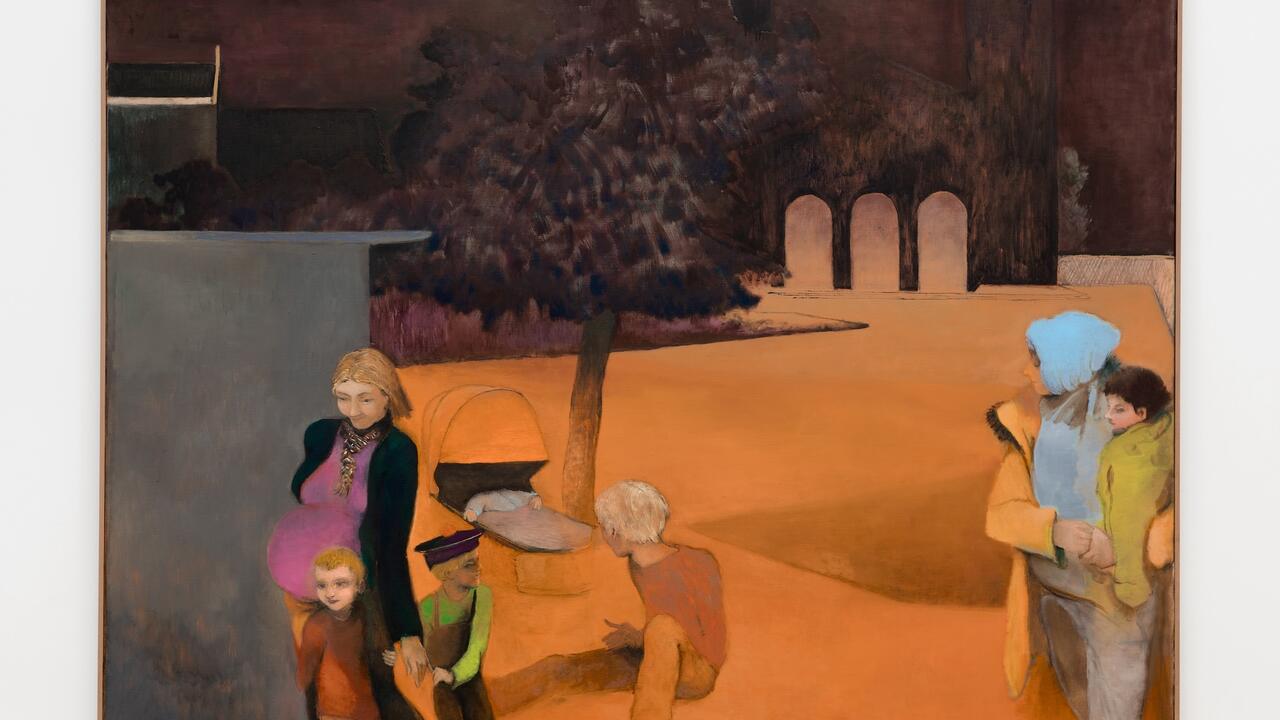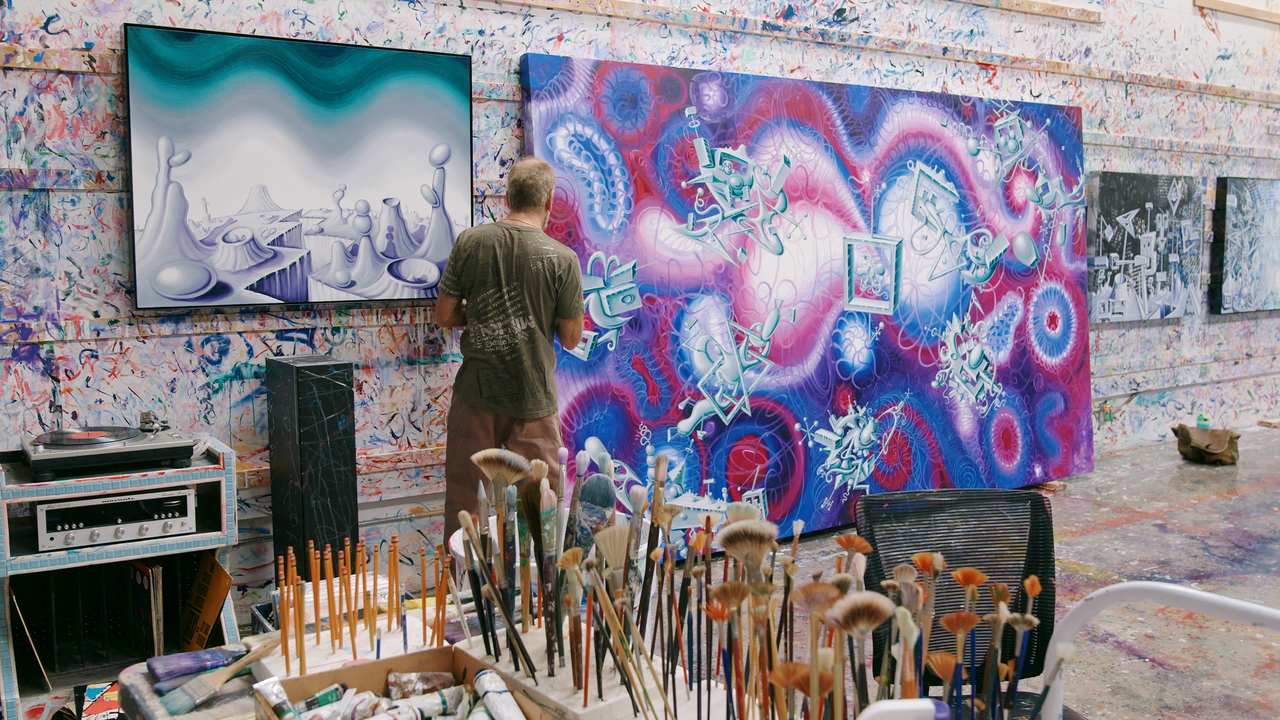Dark side of the room
Plain surfaces
Plain surfaces

One night in the mid-1790s the architect Etienne-Louis Boullée took a walk in the forest at full moon.
Suddenly he noticed his own shadow moving among those of the trees. 'What did I see?' he wrote in his memoirs. 'A mass of objects detached in black against a light of extreme pallor. Nature seemed to offer itself, in mourning, to my sight.' Boullée began to imagine an architecture of naked walls, 'stripped of every ornament ... light-absorbing material should create a dark architecture of shadows, outlined by even darker shadows'. 1
A taste for the monumental unadorned tombs of the Pharaohs may have been prevalent at the time but it was probably no coincidence that Boullée dreamed up his Temple of Death (c. 1795) shortly after Robespierre's Terror had forced him to withdraw from Parisian public life. His earlier design for a Monument to Sir Isaac Newton (c. 1785) is like a giant, unadorned white balloon, about to rise skyward. The Temple of Death, in total contrast, is sunk into the ground. It looks like a photographic negative, and its ornamentation is a mere punched-out absence - a series of black, square window openings. What was new about Boullée's design was that instead of being based on living nature it was based on nature's fleeting, distorted image: its shadow. What Boullée imagined was a monolithic plainness, dark surfaces swaying between flatness and endless depth. More than just romantic horror vacui, this was a premonition of the plain, smooth surfaces that would embody the rationalization of space in the dawning Industrial Age.
In the Modern Age it is usually the kaleidoscopic, shiny surfaces of the objects surrounding us that are most eloquent about our desires and fears. The indifferently plain, matt, monochrome, silent surfaces ubiquitous in modern society - industrial finishes in black, grey and anthracite; polished steel, sheets of plaster, pressed wood, plastic and aluminium; walls, streets, machines - are silently taken for granted as being neutral amid the glittering turmoil. Ever since Boullée, however, the reality has been that plain surfaces are not simply neutral objects in social space, but the very materialization of that space.
In art, Frank Stella's 'Black Paintings' (1958), after Kasimir Malevich and Ad Reinhardt, almost tipped painting over into sculpture, transforming it into a flat object protruding from the wall. But it was in Minimal Art (from Tony Smith and Anne Truitt to Donald Judd, Robert Morris and Sol LeWitt) and in the work of those who came after (from Eva Hesse to Tom Burr) that the plain surface became conscious not only of itself, but also of the space around it.
Minimal Art, the first genuinely American art movement, is an exemplary reduction of artistic language to plain surface, but the history of Modernity in the US demonstrates something more than that: a connection between the grid and the regulation of capitalist expansion. The American principle is that of contained contingency - a simple two-dimensional pattern produces a three-dimensional energy rush, whether skyward, as in New York, or towards the horizon, as in Los Angeles. The grid itself is anything but a New World invention, but the myth of the ever-expanding West produced the idea of its implicit infinity. The bars of the grid delineate and endlessly multiply the surfaces - building façades, billboards, factory frontages, streets, even landscapes. Seen through the window of a train, car or plane, travelling straight as an arrow to the horizon and beyond, any detail or ornamentation is blurred into a line or becomes invisible.
What kind of meaning attaches itself to these plain surfaces? For Ruskin in the 19th century, it was ornament that made architecture an art. To him, the mechanical was an abomination, not least because in embellishing their iron creations engineers claimed artistic superfluity. At the Great Exhibition of 1851, Joseph Paxton's Crystal Palace, with its large, flat planes of iron and glass, was the first modular building in the grand style. Ruskin and many of his contemporaries abhorred it, and for at least another 50 years pompous façades with retro ornamentation continued to be built. However, one Prussian visitor to Crystal Palace, Lothar Bucher, wrote of it enthusiastically: 'The side walls are too far apart to be embraced in a single glance ... the eye sweeps along an unending perspective that fades into the horizon ... where all materiality is blended into the atmosphere.' 2 'Ordinary' people, including many foreign visitors, flocked to Crystal Palace in droves, longing for the dynamics promised in its smooth surfaces.
In 1893 Adolf Loos, the Viennese architect and infamous author of Ornament and Crime (1908), visited relatives in Philadelphia. During a one-hour bus ride he admired the urban sense of simple style found even in outlying areas of the city. 3 Loos considered any overt expression of wealth and beauty a sign of bad taste. 'The lower a people are,' he wrote, 'the more wasteful they are with adornments.' 4 In one of his early writings, Das Luxusfuhrwerk (The Luxurious Wagon, 1898), Loos wrote of enthusiasm for ornament as the 'Indian perspective', as if admiringly taking for granted that the US had, along with the ornamental, eradicated its indigenous population. However, aesthetic concerns are not entirely absent from his own work. Loos described his Chicago Tribune Tower competition entry (1922) as an attempt to replace 'the ornaments of the elders with precious material ... expressed here in gigantic form; only one kind of material should be used: black, polished granite'. 5 The material itself has become the luxury, only decoded by the expert's careful glance - this is a Viennese coffee-house refinement that has little to do with puritanical sobriety.
Although Constructivism and the Bauhaus paved the way, it was not until the 1960s and the arrival of Minimalism that the plain surface arrived in all its non-glory. Seen through the filter of American urban grid patterns and the building regulations connected to it, the steep diagonals of the Constructivists disappeared. Thus attention was directed away from the relationship between the parts towards monolithic shape and metrical serialization. The avoidance of unevenness on the material surface, the finish, became an unspoken rule.
The ultimate frustration for Sol LeWitt must have been when the wood underneath the black paint of his first skeletal cubes became noticeable. It was only after 1965 that he was able to attain a proper industrial finish, using much more expensive steel and white enamel. At the same time he got rid of the light-absorbing black, the only colour that allowed a reasonably uniform finish on the wooden surface beneath. (In the light of this, it's ironic that in Washer Table of 1967 Eva Hesse covered a white wooden table she had obtained from LeWitt with 700 black rubber washers.)
The Minimal Art object is usually not found or ready-made, but fabricated and intended for no apparent use. In this sense it functions like Hitchcock's 'McGuffin': a particular prop in a film that is little more than a pretence, a narrative trick to trigger the plot. However, at the same time, the Minimal Art object is a quiet presence, a massive manifestation, a silent occupation of space. So it is both factual and fetish, empty and charged, provocative and silent. It's rather as if the factual side resides in the hollow interior of the form, and the fetishist charge is present on the surface.
Dipping the prototypical Minimal cube in a light-absorbing black threatens to bring its dystopian vestiges to the fore. Tony Smith's Black Box (1962) plays on this very effect, beginning with the title. According to Webster's dictionary, the term 'black box' was first used in 1945, to refer to an electronic device whose internal mechanism remains hidden to the user; only later did it become a synonym for a flight data recorder. Because Smith's box has a closed, carefully soldered, completely opaque surface it seems uncanny. In a double bind, it demands to be used and yet to remain untouched.
At Minimal Art's peak between 1964 and 1967 objects were pushed to the limits of sobriety - or material beauty - not least to tone down this alienating effect, which threatened to tip the objects into a black sea of possible meanings. LeWitt turned to open grid structures. Judd used coloured Perspex, polished copper or stainless steel. Morris painted his pieces grey, the colour of indifference. While the mid-1960s were bursting with Super-8, satellite transmissions and psychedelia, Minimalism was about cool, silent detachment, as if to illustrate McLuhan's observation that new media technologies provoke a protective mechanism leading to a partially anaesthetized state.
But this flight from pop cultural cacophony can still be perceived as a silent tension. In early 2001 one single work by Tony Smith was exhibited in a small room of the Paula Cooper Gallery, New York. Tau (1965) is a stocky, massive polygon, about three feet high. The upper part juts forward, overbalancing as if it is about to tip over, but the uniform matt black veneer makes the whole seem one perfect unity. The slightly rounded edges softly shimmer in dim light, as if the thing is almost unnoticeably vibrating or radiating something - an absorbing stubbornness.
Originally an architect and painter, Smith's interest in basic forms such as tetrahedrons and octahedrons had less to do with Buckminster Fuller than with Alexander Graham Bell's experiments at the end of the 19th century with Chinese kites and simple, pyramid-shaped wooden houses. Yet Smith was not just a finicky hobbyist. While making pragmatic decisions in favour of simple methods of manufacture using the least number of elements, he was concerned with creating a sinister chamber of allusions that would oppose spick-and-span rationalism. His outdoor sculptures bear short, dry, almost proto-punk titles: The Snake Is Out, We Lost, Duck, Free Ride (all 1962) or Cigarette (1961). Smith greatly admired Le Corbusier, but the hygienic ideal of the 'Machine for Living' seems foreign to his work. 'I see my pieces as aggressors in hostile territory. I think of them as seeds or germs that could spread growth or disease.' 6
Smith was not just reacting to the vulnerability of public sculpture. In 1966, before he began creating large outdoor works, he referred to an epiphany that he had experienced while driving one night in 1951. Someone had told him how to reach a then unfinished motorway in New Jersey. 'It was a dark night and there were no lights or shoulder markers, lines, railings, or anything at all except the dark pavement moving through the landscape of the flats, rimmed by hills in the distance ... This drive was a revealing experience. The road and much of the landscape was artificial, and yet it couldn't be called a work of art. On the other hand, it did something for me that art had never done ... its effect was to liberate me from many of the views I had had about art ... the experience on the road was something mapped out but not socially recognized. I thought to myself, it ought to be clear that's the end of art. Most painting looks pretty pictorial after that. There is no way you can frame it, you just have to experience it.' 7
Michael Fried pounced gleefully on Smith's insistence that 'you just have to experience it' as a clear indication that Minimal Art in general propagated a false immediacy. 8 But Robert Smithson pointed out in 1968 that Smith's epiphany did not replace the work of art, but rather anticipated it - through a process of delimitation, of 'de-differentiation'. 9 Boullée's moving shadows had returned, disguised, in a landscape dominated by industrialization and cars. In an article in Artforum entitled 'Entropy and the New Monuments' (1966) Smithson took pleasure in scratching at the opaque surface of Minimal Art's rhetoric of self-reference, anti-illusionism and matter-of-factness. All of a sudden, the world seemed swarming with prehistoric and Futurist landmarks straight out of sci-fi B-movies. Smithson noticed that New York cinemas no longer radiated a run-down Baroque look, but adopted the new 'rubber cell' or 'stripped-down' style. 10
Stanley Kubrick and Arthur C. Clarke, together with a staff of designers, conceived the famous monolith of 2001 - A Space Odyssey in New York in November 1965, precisely when Minimal Art was first achieving recognition. In the film the monolith exactly fulfils the role of a 'McGuffin': it is the empty signifier that cannot be interpreted but which triggers the plot. At the same time, it is also - even if only in cinematic space - oppressively, physically present as a fetish of power and technology. It is both the black box of progress and the gravestone of history, bearing no inscription. Kubrick's monolith strangely resembles Anne Truitt's Hardcastle (1962), a tombstone-like monolith on a pedestal, dating from 1962. The work was connected with Truitt's memory of a tragic car accident in which a driver was hit by a train. 11 Such resonances didn't go down particularly well with Donald Judd and others, with their strict understanding of Minimalism. But Kubrick's investing of a monolithic form with an obvious symbolic value also led to allergic reactions in Minimalist circles.
Clarke (whose original story features not a monolith but a pyramid) and Kubrick had originally intended 'that healthy apes, eating game that they had killed, should materialize on the surface of the rectangle, in order to encourage the human apes to learn how to catch and eat other animals'. 12 But Kubrick decided that 'portraying the monolith so explicitly would put it in danger of being seen, as if it were nothing more than an advanced television teaching machine'. 13 In addition, during editing he cut the explanatory voice-over. Both decisions were precise applications of a Minimalist lesson: that an operation of radical abstraction, the avoidance of narrative, could lead to a multiplicity of discourse: 2001 is one of the most discussed films in cinema history.
Kubrick was determined not to turn the opaque, plain surface of the monolith into a canvas or screen, but to let the projections virtually play all around, in a corona of psychedelic shadow play. He was evoking once again the dark, romantic, heretical, intoxicating underside to the puritanical, pragmatic, sober surfaces associated with Minimalism. This Boullée-like view is not necessarily morally better; it does not aim to be morally better for one thing. In fact, it could be argued that, far from being alien to the Minimalist aesthetic, it is inherent within it, serving to highlight the contrast between the shown and the hidden, between flux and stasis.
1. Etienne-Louis Boullée, Architecture. Essai sur l'art, selected and presented by Jean-Marie Pèrouse de Montclos, Hermann, Paris, 1968, p. 136; quoted in Antony Vidler, The Architectural Uncanny, Massachusetts Institute of Technology, Cambridge, MA, 1992, p. 170.
2. Lothar Bucher, quoted in Marshall Berman, All That Is Solid Melts Into Air. The Experience of Modernity, Penguin Books, New York, 1988, p. 239.
3. Adolf Loos Trotzdem: Gesammelte Schriften 1900-1930, ed. Adolf Opel, Georg Prachner, Vienna, 1997, pp. 22f.
4. Quoted by Fedor Roth, Adolf Loos und die Idee des Ökonomischen, Deuticke Verlag, Vienna, 1995, p. 48.
5. Adolf Loos, Die Potemkinsche Stadt. Verschollene Schriften. 1897-1933, ed. Adolf Opel, Georg Prachner Verlag, Vienna, 1983, p. 195.
6. Tony Smith, exhibition catalogue, Museum of Modern Art, New York, 1998, p.29.
7. Samuel J. Wagstaff, 'Talking with Tony Smith', Artforum, 5 December 1966, p. 16, quoted in Tony Smith, loc. cit. pp. 21ff.
8. Michael Fried, 'Art and Objecthood', in Minimal Art. A Critical Anthology, ed. Geoffrey Battcock,University of California Press, Berkeley, Los Angeles and London, 1968, pp. 116-147, pp. 134f., original in Artforum, vol. 5, no. 10, June 1967, pp. 12-23.
9. Robert Smithson, Collected Writings, ed. Jack Flam, University of California Press, Berkeley, Los Angeles, London, 1996, p. 103.
10. Ibid., pp. 10-23.
11. James Meyer, Minimalism. Art and Polemics in the Sixties Yale University Press, New Haven and London, 2001, p. 72.
12. Gene D. Phillips, Stanley Kubrick - A Film Odyssey, Popular Library, New York, 1975, p. 150, quoted in Reihe Film 18, Stanley Kubrick, ed. Peter W. Jansen/Wolfram Schütte, Carl Hanser Verlag, Munich, 1984, p. 133.
13. Joseph Gelmis, 'Stanley Kubrick', in Joseph Gelmis, The Film Director as Superstar, Doubleday, New York, 1970, p. 401, quoted in Reihe Film 18, Stanley Kubrick, ed. Jansen/Schütte, loc. cit.
























